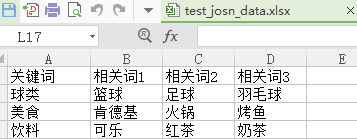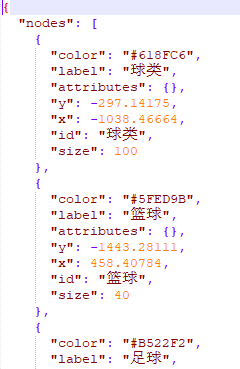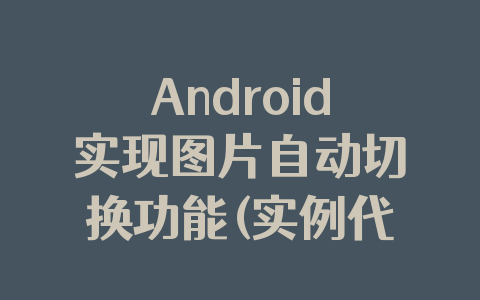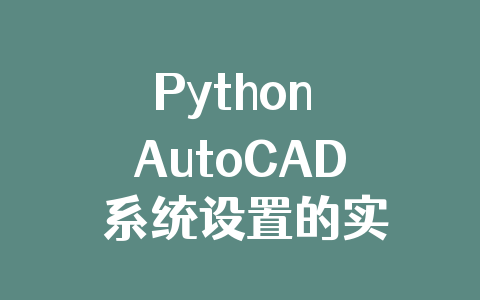生活中有很多需要用到关联图的地方,至少我认为的是这样的图:https://www.echartsjs.com/examples/zh/editor.html?c=graph-npm
我是在使用Word2Vec计算关联词的余弦距离之后,想要更好的展示出来的时候,遇到的这种情况,就做了下拓展。
画图的步骤主要分为:
1. 将距离数据(或者相关数据)读入;
2. 按照一定的格式和参数将数据保存为json字符串;
3. 根据json串,绘制关联图。
具体而言,主要是:
<1>. 首先有一批数据,如图所示:
<2>. 导入所需要的包
import json
import pandas as pd
import random
import copy
<3>. 产生颜色随机值的函数
# 随机颜色
def randomcolor_func():
color_char = [\'1\',\'2\',\'3\',\'4\',\'5\',\'6\',\'7\',\'8\',\'9\',\'A\',\'B\',\'C\',\'D\',\'E\',\'F\']
color_code = \"\"
for i in range(6):
color_code += color_char[random.randint(0,14)] # randint包括前后节点0和14
return \"#\"+color_code
<4>. 生成随机坐标
# 随机坐标
#生成随机数,浮点类型
def generate_position(n):
# n = 10
for i in range(n):
x = round(random.uniform(-2000, 2000), 5) #一定范围内的随机数,范围可变
y = round(random.uniform(-2000, 2000), 5) #控制随机数的精度round(数值,精度)
return x, y
<5>. 生成json格式的节点数据
def create_json(data, weights):
# 自定义节点
address_dict = {\"nodes\":[], \"edges\":[]}
node_dict = {
\"color\": \"\",
\"label\": \"\",
\"attributes\": {},
\"y\": None,
\"x\": None,
\"id\": \"\",
\"size\": None
}
edge_dict = {
\"sourceID\": \"\",
\"attributes\": {},
\"targetID\": \"\",
\"size\": None
}
# 给节点赋值
for ii in range(len(data)):
for jj in range(len(data.iloc[ii])):
# node,\"attributes\"属性可自行设置
node_dict[r\"color\"] = randomcolor_func()
node_dict[r\"label\"] = data.iloc[ii, jj]
x, y = generate_position(1)
node_dict[r\"y\"] = y
node_dict[r\"x\"] = x
node_dict[r\"id\"] = data.iloc[ii, jj]
node_dict[r\"size\"] = int(weights.loc[data.iloc[ii, jj]])
tmp_node = copy.deepcopy(node_dict)
address_dict[r\"nodes\"].append(tmp_node)
for ii in range(len(data)):
for jj in range(1, len(data.iloc[ii])):
# edge
edge_dict[r\"sourceID\"] = data.iloc[ii, 0]
edge_dict[r\"targetID\"] = data.iloc[ii, jj]
edge_dict[r\"size\"] = 2
tmp_edge = copy.deepcopy(edge_dict)
address_dict[\"edges\"].append(tmp_edge)
return address_dict
<6>. 主函数生成json数据
if __name__ == \'__main__\':
# read data
data = pd.read_excel(r\'test_josn_data.xlsx\', 0)
weights = pd.DataFrame({\"词频\":[100, 40, 30, 20, 90, 50, 35, 14, 85, 38, 29, 10]},
index = [\'球类\',\'篮球\',\'足球\',\'羽毛球\',\'美食\',\'肯德基\',\'火锅\',\'烤鱼\',\'饮料\',\'可乐\',\'红茶\',\'奶茶\']) #建立索引权值列表
address_dict = create_json(data, weights)
with open(\"write_json.json\", \"w\", encoding=\'utf-8\') as f:
# json.dump(dict_, f) # 写为一行
json.dump(address_dict, f, indent=2, ensure_ascii=False) # 写为多行
最后形成的json数据如下:
<7>. 绘制关联图,里面的文件读取和保存地址自行修改,write_json.json 就是上面保存的json文件
import pyecharts.options as opts from pyecharts.charts import Graph import json with open(r\"D:\\Python_workspace\\spyder_space\\test_各种功能\\write_json.json\", encoding=\'utf-8\') as f: #设置以utf-8解码模式读取文件,encoding参数必须设置,否则默认以gbk模式读取文件,当文件中包含中文时,会报错 data = json.load(f) #print(data) nodes = [ { \"x\": node[\"x\"], \"y\": node[\"y\"], \"id\": node[\"id\"], \"name\": node[\"label\"], \"symbolSize\": node[\"size\"], \"itemStyle\": {\"normal\": {\"color\": node[\"color\"]}}, } for node in data[\"nodes\"] ] edges = [{\"source\": edge[\"sourceID\"], \"target\": edge[\"targetID\"]} for edge in data[\"edges\"]] ( Graph(init_opts=opts.InitOpts(width=\"1600px\", height=\"800px\")) .add( series_name=\"\", nodes=nodes, links=edges, layout=\"none\", is_roam=True, is_focusnode=True, label_opts=opts.LabelOpts(is_show=True), linestyle_opts=opts.LineStyleOpts(width=0.5, curve=0.3, opacity=0.7), ) .set_global_opts(title_opts=opts.TitleOpts(title=\"热词对应的关联词\")) .render(\"关联词图.html\") )
最后,就生成了最开始的那张图。
以上就是本文的全部内容,希望对大家的学习有所帮助,也希望大家多多支持自学编程网。
















